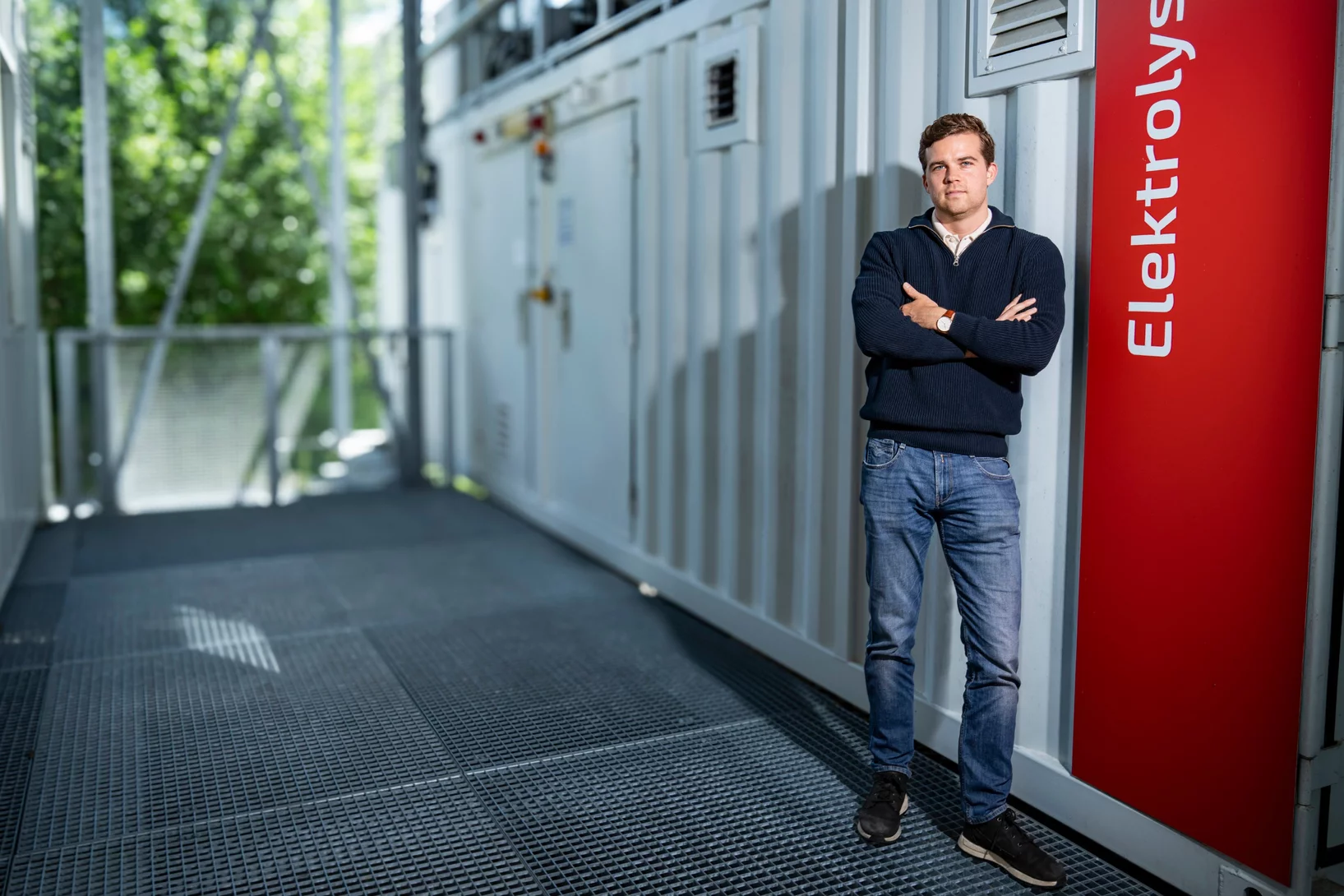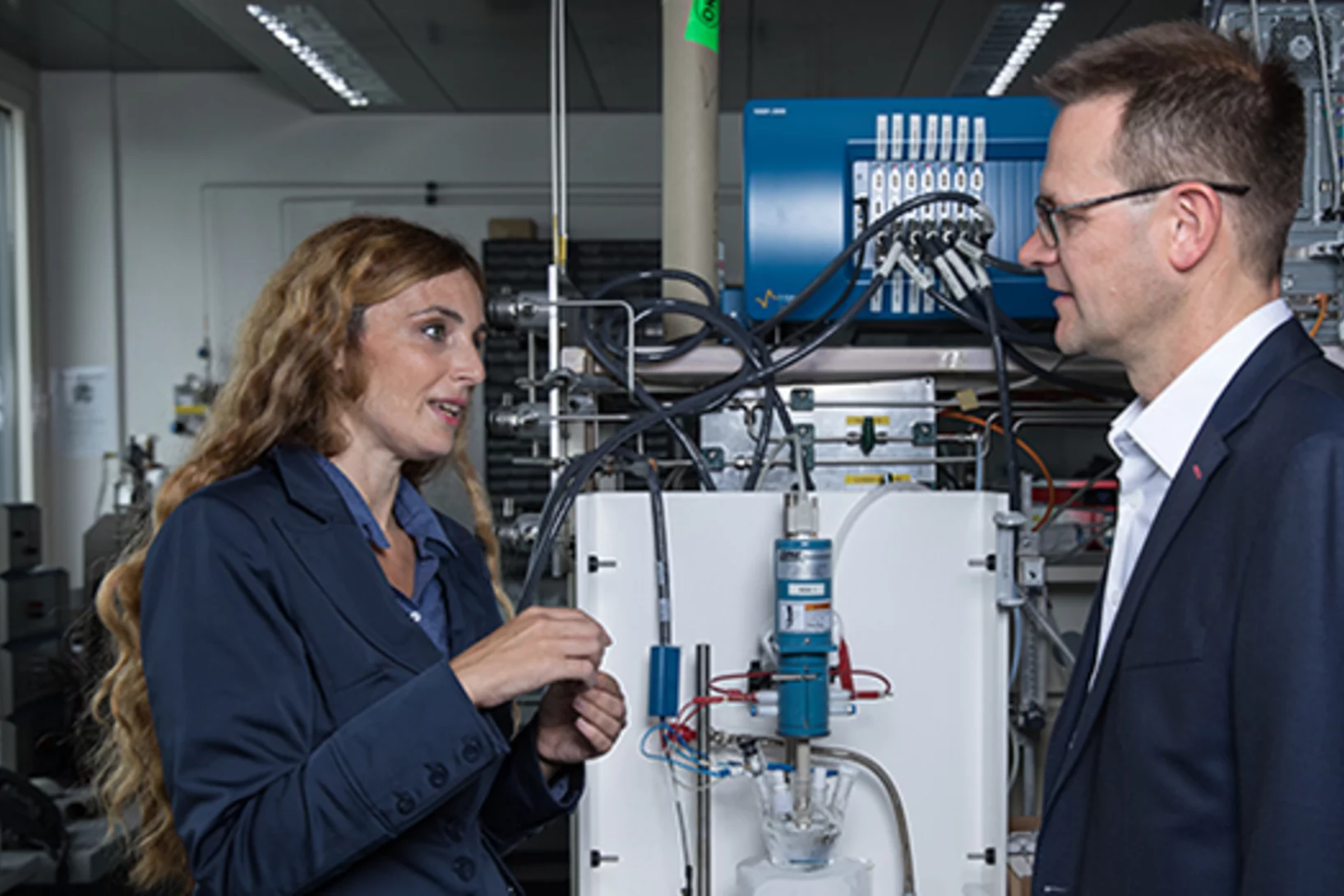Acidic conditions are a challenge. If you want to produce hydrogen by electrolysis and use a low-cost catalyst such as cobalt, the process doesn’t function as well if the aqueous environment is acidic – working in alkaline conditions is easier. Researchers at the Paul Scherrer Institute PSI have now discovered the reason for this: the surface of the catalyst changes with the pH value of the environment. Their study, published in the journal Nature Chemistry, provides important clues to enable efficient and cost-effective production of hydrogen for the energy transition in the future.
The simplest and most environmentally friendly method for producing hydrogen is electrolysis: with an electric current, water (H2O) is split into its components, hydrogen (H2 ) and oxygen (O2). Oxygen is produced at the positive pole, the anode; hydrogen is produced at the negative pole, the cathode. Water splitting can be carried out in an alkaline environment (pH>7), an acidic one (pH<7), or a neutral one (pH=7). Different types of electrolysers operate at different pH values, that is, in different aqueous environments.
In splitting water, the formation of oxygen is the step that requires the most energy, effectively the bottleneck of the reaction. To make it possible to do this more efficiently and cost-effectively, catalysts such as the metal cobalt are used. However, electrolysis with cobalt only works satisfactorily in an alkaline environment; the reason for this was previously unknown.
A PSI research group in the Center for Energy and Environmental Sciences have now found out the cause: depending on the pH value, the catalyst’s surface changes. In acidic conditions, active sites where oxygen can be produced require more energy to form – as a result, electrolysis becomes slow and uneconomical. “We assume that this is the case not only with cobalt, but also with other metals that likewise perform less well in acidic conditions – such as manganese, iron, and nickel,” says Jinzhen Huang, a postdoctoral researcher in Emiliana Fabbri’s and Thomas Schmidt’s research group and first author of the study.
Cobalt as a low-cost alternative
At present, the noble metals iridium and ruthenium are usually used as catalysts for splitting water. Their activity changes only slightly depending on the pH value and therefore also work well in acidic environments. However, cobalt and other so-called transition metals are significantly cheaper and more abundant on Earth, which makes them particularly attractive for large-scale applications. “Replacing the noble metals with cobalt and other lower-cost metals is a major challenge,” Emiliana Fabbri explains. “Our findings are important steps on the way to that goal.”
The PSI researcher used various methods to investigate oxygen formation during electrolysis in detail. Among other things, the researchers used the X-ray light from the Swiss Light Source SLS. As a catalyst, they used cobalt oxide nanoparticles. These were incorporated into the anodic electrode, the part of the apparatus where oxygen forms.
What matters is the surface
As the PSI researchers’ measurements show, a layer of oxygen and hydrogen compounds forms on the surface of the cobalt catalyst, which thickens during the course of electrolysis. As the electrolysis proceeds further, the reactions then take place on this newly formed surface. “In a neutral or acidic environment, these catalytically active layers build up only at a slower rate or with a higher energy input,” explains Jinzhen Huang. “This is the reason the reaction requires more energy to proceed and is slower overall than in alkaline conditions.”
With their study, Emiliana Fabbri and her team have solved a long-standing scientific mystery. The findings could lead to a better understanding of the electrolysis process and thus help to make it more efficient in the future. Thus a different catalyst design could help to make the reaction more economical.





